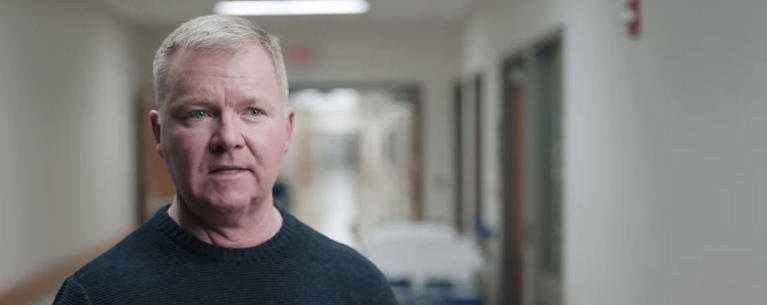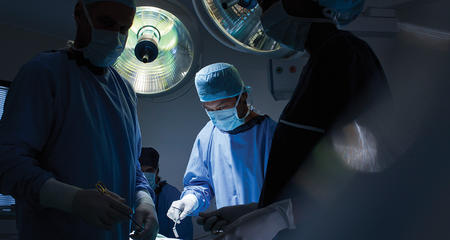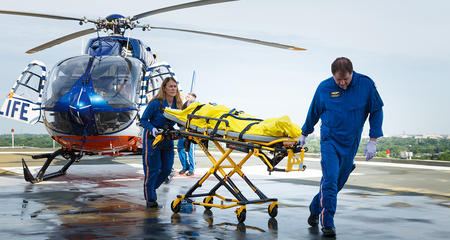
When people in Wisconsin are severely injured, they have a better chance of surviving thanks to our adult Level I Trauma Center at Froedtert Hospital. It is the only adult Level I Trauma Center in eastern Wisconsin and one of two in the state. Severely injured patients from as far away as Pierce, Rusk and Oneida counties in Wisconsin are brought to the Trauma Center for life-saving care.
Our Level I Trauma Center collaborates with the Froedtert & MCW health network’s Level III trauma centers at Froedtert Menomonee Falls Hospital and Froedtert West Bend Hospital, as well as our health network's Emergency Departments, to provide the best possible level of care for people with traumatic injuries.
What Is Trauma?
Trauma is any serious injury caused by an external force, such as a motor vehicle crash, falls, violence, sports- or recreational-related injuries and job-related injuries. Care must be tailored to each individual depending on the type, extent and severity of the injury. There are two main types of traumatic injuries (physical injuries that cause serious damage to the body).
- Blunt force trauma happens when an object or force strikes the body. It can cause concussions, deep cuts, broken bones and crush injuries.
- Penetrating trauma happens when an object pierces the skin or body and usually creates an open wound.
Psychological trauma involves an emotional or psychological injury, typically resulting from an extremely stressful or life-threatening situation. People who have had traumatic injuries can experience this type of trauma, and treatment is needed for healing and the best possible quality of life after injury.
What Does “Level I” Mean?
Our Trauma Center is classified as “Level I,” which means it provides the highest level of specialty expertise and meets strict national standards. Specialized teams, facilities and equipment are available around the clock, 365 days a year, to treat life-threatening injuries.
A trauma center is not the same as a hospital emergency department; emergency services are a critical component of a comprehensive trauma program. A Level I facility must have the capability of providing total care for every aspect of injury — from injury prevention to rehabilitation — for any part of the body.
According to a study published in the New England Journal of Medicine*, you receive treatment at a Level I Trauma Center, there is a 25% reduction in mortality compared with people who are not treated at a trauma center. Yet, about 45 million people in the U.S. lack access to a Level I Trauma Center within an hour of injury, a critical window. Faster transportation time to a trauma center saves lives. Source: N Engl J Med 2006;354:366-78.











